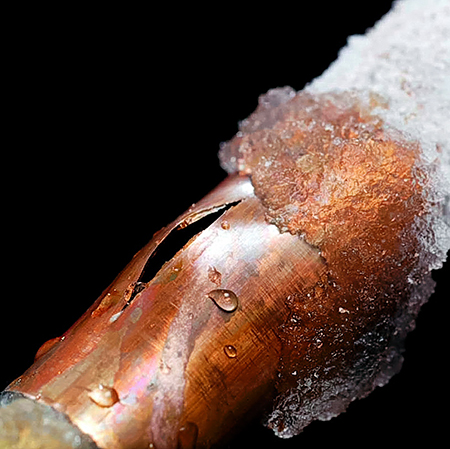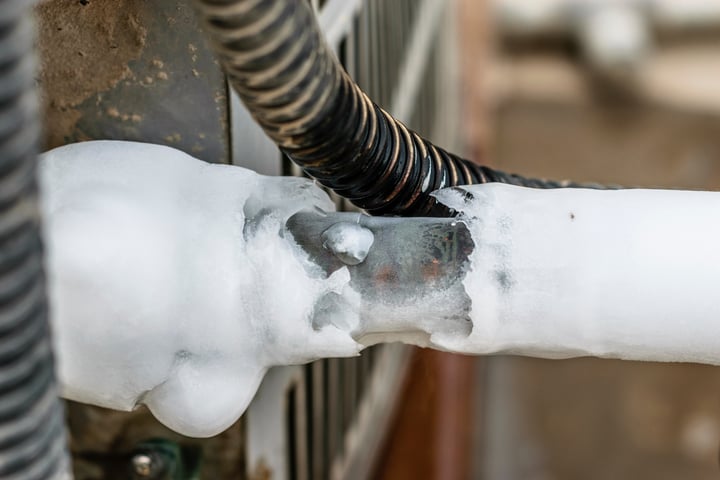Are you currently interested in selective information Have a Frozen AC Line? Here’s How to Fix It?

Intro
Uncovering that your air conditioner pipeline is iced up can be worrying, particularly during hot summer months when you rely on your ac system the most. Recognizing what to do in such a scenario is critical to stop more damage to your cooling system and ensure your convenience inside.
Comprehending the Causes
Several elements can add to the freezing of an AC pipe. Recognizing these causes can aid you deal with the concern efficiently.
Absence of Airflow
One common root cause of a frozen air conditioning pipeline is inadequate airflow. When the air movement over the evaporator coil is restricted, it can trigger the coil to go down below freezing temperature, causing ice formation on the pipe.
Reduced Refrigerant Levels
Insufficient refrigerant levels in your air conditioning system can also cause an icy pipe. Reduced refrigerant levels can cause the stress in the system to go down, resulting in the cold of dampness on the evaporator coil.
Cold Weather Conditions
In chillier environments, freezing temperature levels outside can add to the freezing of a/c pipelines. If your AC system is not effectively insulated or if there are leaks in the ductwork, chilly air can penetrate the system, creating the pipe to freeze.
Dirty Air Filters
Filthy or stopped up air filters can limit airflow in your air conditioning system, causing numerous concerns, including a frozen pipe. It's important to change or cleanse your air filterings system routinely to make sure appropriate air movement and protect against ice buildup.
Signs of a Frozen Air Conditioning Pipe
Acknowledging the indications of a frozen a/c pipeline is vital for punctual activity.
Lowered Airflow
If you see a significant decrease in airflow from your vents, it could show an icy pipeline.
Ice Buildup on the Pipe
Noticeable ice build-up on the cooling agent line or the evaporator coil is a clear sign of an icy a/c pipeline.
Odd Sounds from the Unit
Unusual noises, such as hissing or gurgling, coming from your AC unit can signify that there's ice existing on the pipeline.
Immediate Actions to Take
When confronted with a frozen air conditioning pipe, it's essential to act quickly to avoid additional damages to your air conditioning system.
Switching off the AC
The initial step is to shut off your ac unit to prevent the system from running and intensifying the problem.
Looking for Blockages
Check the area around the interior system for any type of blockages that may be obstructing airflow, such as furnishings or curtains.
Thawing the Pipe
You can make use of gentle methods like putting towels taken in warm water around the icy pipeline to assist thaw it gradually.
Preventive Measures
Taking safety nets can aid avoid future occurrences of a frozen air conditioner pipe.
When DIY Methods Fail
If your efforts to thaw the pipeline or address other problems are not successful, it's time to contact a specialist.
Importance of Hiring a Professional HVAC Technician
A licensed HVAC technician has the competence and devices required to identify and fix issues with your air conditioning system securely and properly.
Regular Maintenance Checks
Arrange routine upkeep consult an expert HVAC professional to ensure that your air conditioning system is running effectively.
Transforming Air Filters
Regularly replace or clean your air filters to avoid air flow constraints and maintain ideal efficiency.
Protecting Exposed Pipes
If your air conditioning pipelines are revealed to chilly temperatures, take into consideration protecting them to prevent cold throughout winter months.
Looking For Professional Help
If DIY techniques fail to resolve the concern or if you're uncertain about just how to proceed, it's best to seek assistance from a certified HVAC specialist.
Conclusion
Managing a frozen air conditioner pipeline can be a frustrating experience, yet understanding just how to respond can aid lessen damage and bring back comfort to your home. By recognizing the causes, identifying the signs, and taking punctual action, you can properly address the issue and avoid future incidents.
Frozen AC Line: Why It Happens & What To Do About It
A frozen AC line can be a rather peculiar sight in a place like Phoenix, Arizona where nothing ever freezes. In this post, we’ll discuss what makes an air conditioner line frozen – and what you can do about it.
Dirty Air Filters
Did you know that you should be cleaning or replacing your air filters on a monthly basis? Failing to do this can result in airflow issues that, in turn, cause your evaporator coils and lines to freeze over. You’ll notice a buildup of ice on both components, although the buildup on your pipes will, of course, be more evident unless you open your air condition up to reveal the coils.
What To Do About It
Give your air filter a good cleaning if it’s reusable. If not, replace the filter outright. Next, switch your air conditioner’s fan setting on and leave it there for 2-3 hours. This will draw warm air in, helping to thaw your evaporator coil. You can also check out this article for some tips on cleaning the coils themselves if you’d like to speed the process up. Before you switch the unit back to its normal state, make sure the supply vents are completely unobstructed and free of dust or other debris.
If you keep having this issue even after replacing your filters regularly, contact a local HVAC repair company and have them inspect your evaporator coil, ductwork, and any other components that may be at fault. If you live in the Phoenix, Arizona area, give American Home Water and Air a call.
Low Refrigerant Levels/Leakage
What To Do About It
Contrary to what air conditioner “recharge” companies often tell their clients about refrigerant, it should never need to be simply refilled. You see, refrigerant runs in what experts refer to as a “closed loop.” Refrigerant really shouldn’t be leaving that loop. If it is, you’ve got a leak.
Paying someone to come and pump more refrigerant into your system (aka “recharge” it) isn’t the solution. Doing that will simply kick the can down the road. Besides, refrigerant leaks can be harmful to the environment and people in your home.
Rather, you need to take care of the leak with the help of a technician. Check out this article for some more information about dealing with air conditioners that are leaking refrigerant. Before you contact a technician, switch your thermostat to the off position. Then, switch the fan setting on and let it run for 2-3 hours so the unit can thaw.
Improper Temperature Setting
Improper temperature settings can also cause a drop in your air conditioner’s pressure. What many people don’t realize is that air conditioners are actually designed to run when temperatures have fallen above roughly 60 degrees Fahrenheit. If you run the unit when it’s cold outside, you’ll run into many issues, including frozen components.

As a devoted person who reads about Why Is Ice On My Outside Air Conditione, I thought sharing that excerpt was important. Sharing is good. Helping people is fun. I treasure reading our article about Have a Frozen AC Line? Here’s How to Fix It.
Visit Link
Comments on “Troubleshooting a Frozen AC Pipe - Effective Fixes for House Cooling Systems”